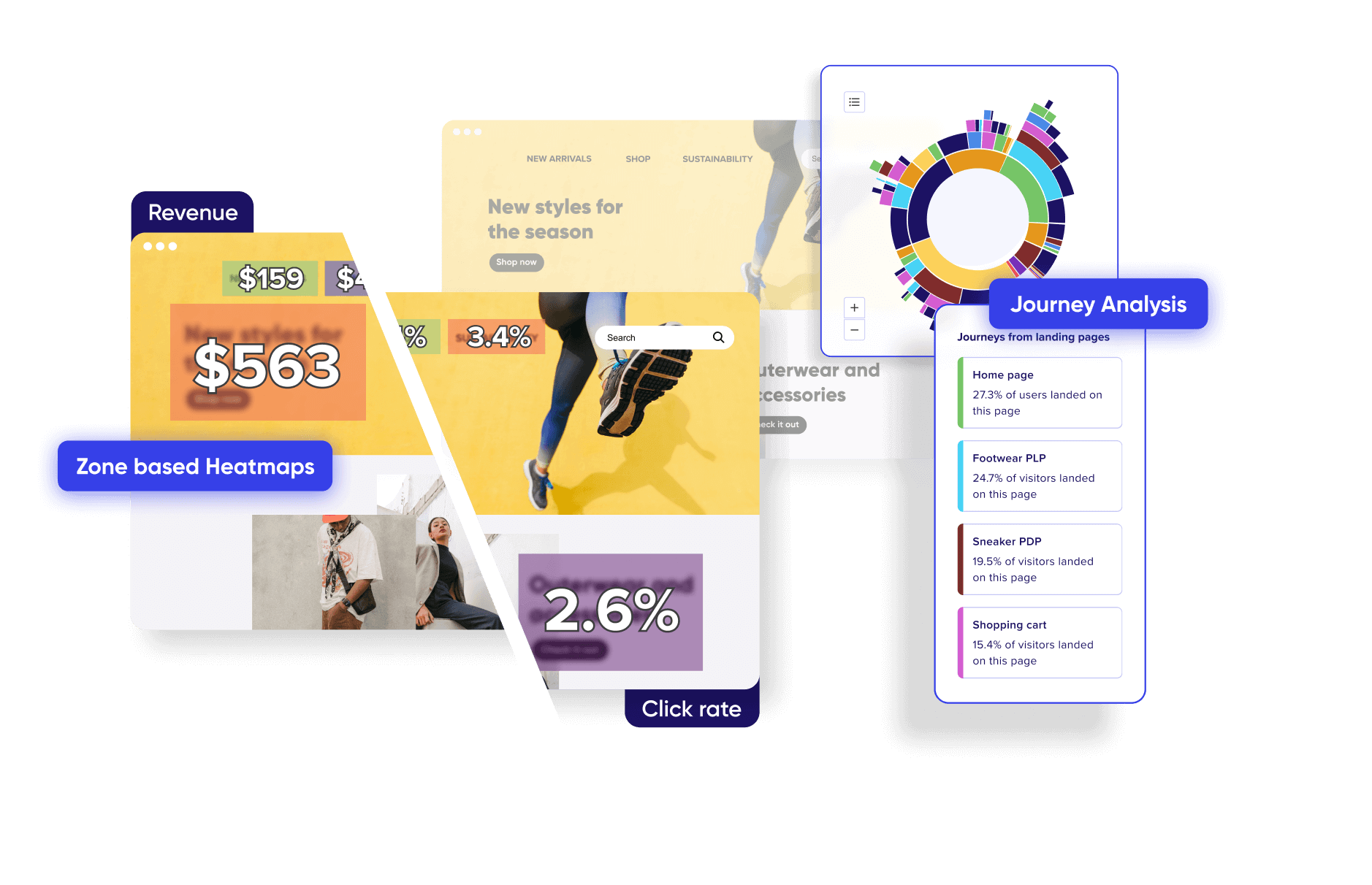
Know what drives engagement and abandonment on your sites and mobile apps.

In the context of website analytics, a fundamental understanding of key terms such as “Page Views” and “Page Visits” is crucial for effective digital marketing strategies. These terms offer insights into website traffic, essential for enhancing your online presence. Understanding the difference between these terms is paramount in interpreting Google Analytics data accurately, which in turn, influences your SEO strategies. Page views and page visits are not synonymous in the world of website analytics.
Each term represents a unique aspect of user interaction on the customer journey of them in your website.
Misinterpretation of these terms can lead to a skewed analysis of your website traffic, impacting your digital marketing decisions and online presence.
The following sections delve into the specifics of these two key terms.
The aim is to provide a comprehensive understanding of these metrics, allowing for an accurate interpretation of website analytics. This knowledge is crucial for creating effective digital marketing strategies and enhancing your online presence.
In the realm of website analytics, a Page View refers to the number of times a specific page on your website is loaded or reloaded in a browser. Page Views are generated by both new and returning visitors.
By tracking this metric in Google Analytics, you can gain insights into the effectiveness of your SEO strategies. A high number of Page Views signifies that your website or a specific page on your website is attracting significant website traffic. However, it’s important to note that a single visitor can generate multiple Page Views if they reload the page or revisit it within a single session.
Therefore, Page Views is a raw measure of your website’s traffic. While it provides a broad picture of your site’s popularity, it does not offer a nuanced understanding of user interaction or engagement on your site.
For a more detailed analysis, it is necessary to consider other metrics, like Page Visits, bounce rate, and click-through rate, as well.
Know what drives engagement and abandonment on your sites and mobile apps.
When we speak about what is a page views, it’s necessary to talk about page visits! Page Visits, also known as sessions, refer to a series of user interactions with your website that take place within a given time frame. A single Page Visit can encompass multiple Page Views, events, social interactions, and ecommerce transactions.
A session begins when a user lands on your website and ends after 30 minutes of inactivity, or at midnight. If the same user returns to your site after a session has ended, a new session is initiated, and it is counted as another Page Visit. Therefore, Page Visits provide a more comprehensive measure of user engagement on your site compared to Page Views.
They offer insights into how users are interacting with your site during a single session, which can be invaluable for understanding user behavior and optimizing your site’s user experience.
However, like all metrics, Page Visits should not be viewed in isolation but considered in conjunction with other relevant metrics for a holistic analysis of your website’s performance.
In the realm of digital marketing and website analytics, understanding the distinction between page views and page visits is fundamental. These two metrics are integral aspects of user interaction analysis, providing valuable insights into a website’s performance and user engagement. Page views, also known as page impressions in Google Analytics, refer to the total number of times a particular webpage has been interacted with or viewed by users. This figure includes repeated views of a single page during one internet browsing session, meaning if a user reloads the page or revisits the same page, each instance is counted as a separate page view.
Know what drives engagement and abandonment on your sites and mobile apps.
Page visits, on the other hand, are synonymous with sessions or user sessions in Google Analytics.
A page visit represents the duration from when a user first lands on your website to when they exit your site or become inactive for a specific period, typically 30 minutes. During a single visit, a user may view multiple pages, contributing to the website’s overall page views, but it will still count as one visit in terms of website traffic.
Decoding the Retail Customer Journey: A Detailed Approach and Best Practices
The primary difference between page views and page visits lies in the user interaction they each represent. Page views are a more granular metric, focusing on individual pages and their popularity.
They can reveal which content is most engaging or attractive to users, offering insight into user preferences and the effectiveness of the content in enhancing online presence. Conversely, page visits provide a broader view of user interaction. They indicate the overall website traffic a site receives, irrespective of the number of pages viewed during a visit.
This metric is particularly useful in understanding the reach of a website and measuring the effectiveness of digital marketing strategies in driving traffic. In the context of SEO, both page views and page visits are critical.
High page views can suggest engaging content, which can improve a site’s ranking in search engine results and positively impact the click-through rate. Simultaneously, a high number of page visits can indicate a successful marketing strategy, driving more traffic to the site and potentially reducing the bounce rate. In conclusion, while page views and page visits are different metrics in website analytics, they are both instrumental in understanding user interaction and improving a website’s online presence.
Depending on the specific goals of a website, one may be more relevant than the other. However, a comprehensive SEO strategy should consider both to achieve optimal results and improve website traffic.
Know what drives engagement and abandonment on your sites and mobile apps.